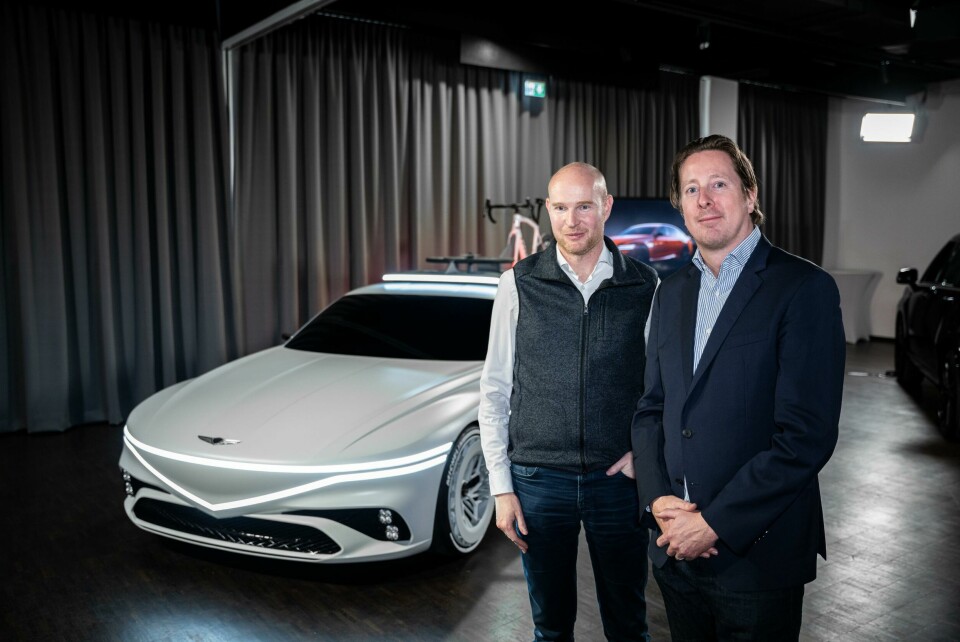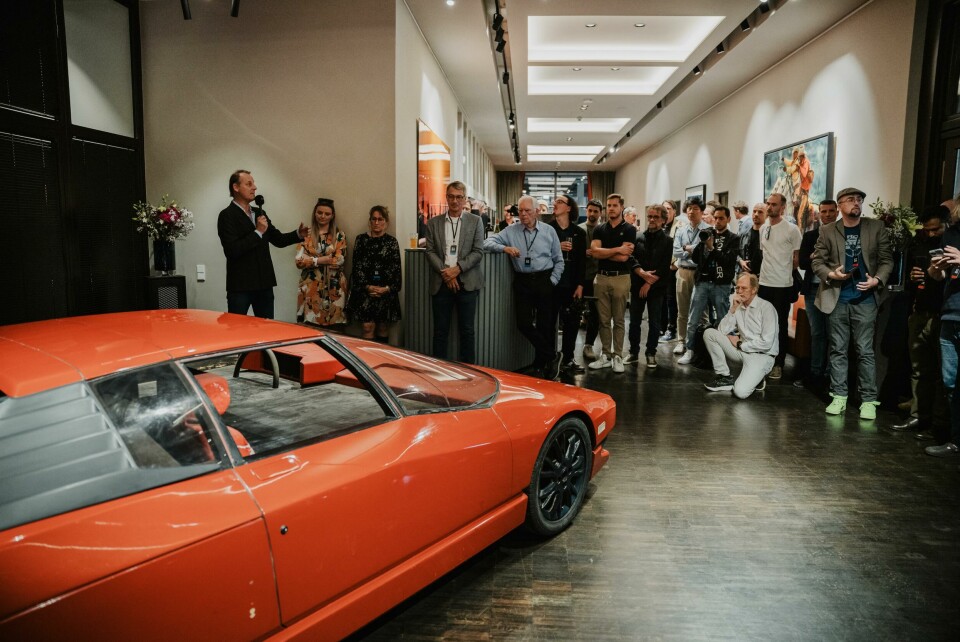
CDE 2024: a motor show “without the waste”
Car Design News was back in Munich to attend the annual, and appropriately named, Car Design Event (CDE). The show brought together designers and journalists in an intimate setting that underscored the value of more boutique events
Without looking too deeply at the present state of the motorshow, there is clearly still an appetite for in-person gatherings. Car Design Event, now in its second edition, returned to the Munich Drivers’ Club this week with the aim of bringing designers, journalists, students and enthusiasts together in a setting that befits a focus on car design.
Put together by design enthusiasts Jens Meiners and Des Sellmeijer, the programme aimed to avoid death by PowerPoint with a walking tour of production and concept cars (both new and old) and, a night earlier, the European reveal of the new Kia K5 SUV. CDN also had the opportunity to host a panel discussion alongside designers and students from Munich university, which evolved into a back-and-forth around the reality of working with – and learning to use – AI in the design process. More on that to come.
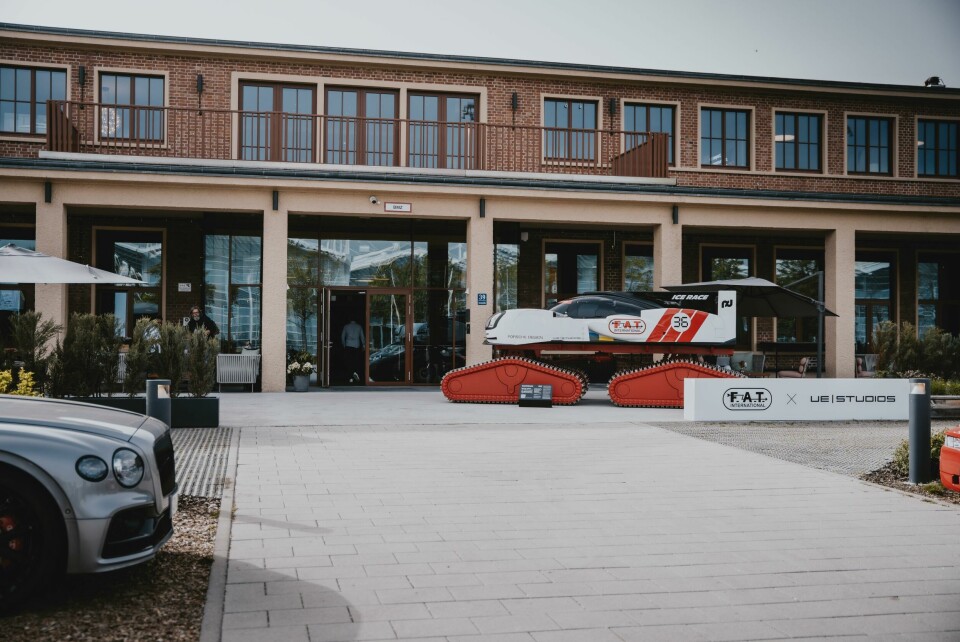
Set not in a warehouse or conference hall but in a members’ club for car collectors and driving enthusiasts, it does indeed feel a little different to the usual auto show. It is a much smaller venue and naturally more intimate, with the added bonus that everyone on site is involved in design in some way.
Robin Page was on hand to discuss the evolution of Bentley design, with naturally gravitated toward the introduction of electric powertrains. Speaking to Car Design News, he explained that there is a tricky balancing act when it comes to the proportions, which – technically – are no longer influenced by a large engine up front.
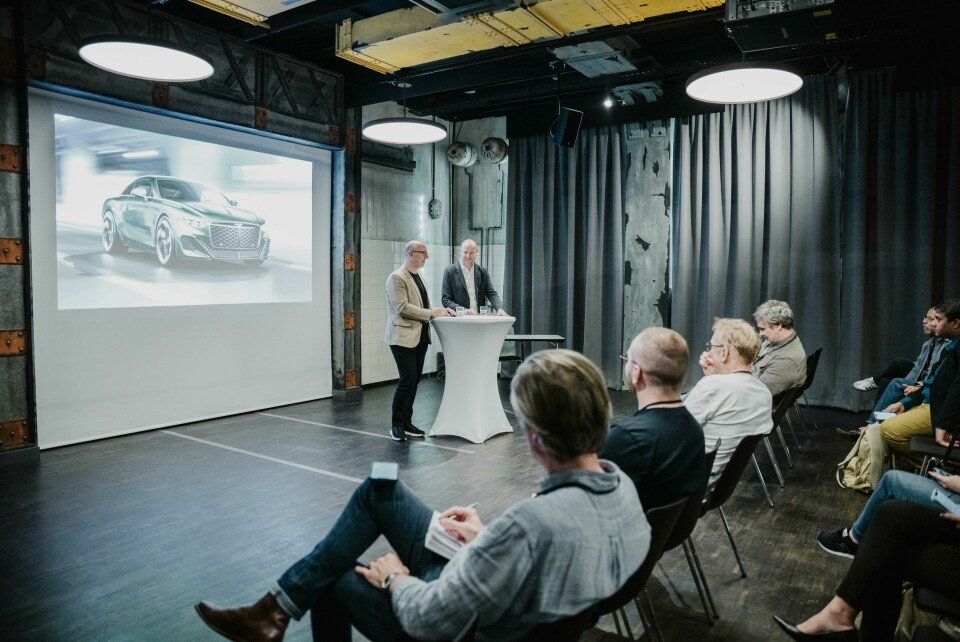
“If you look at electrification, the focus tends to be on the wheelbase, so we are playing around with that proportion of wheelbase but we can’t resist the short front overhangs, the long rear overhangs to get that kind of premium look. It is developing, but it is not going to be a step change where we forget about everything we’ve done now we’re doing EVs, it’s more about capturing the proportions and elegance of those heritage cars in a modern way.”
Also taking the stage was Pininfarina’s CCO Felix Kilbertus, who spoke about the company’s heritage in coachbuilding and how independent design houses can help OEM studios to look internally and ask the tough questions. “If you want to confront the wonderful work you do in house we can do that and act as a mirror to challenge and inspire.”
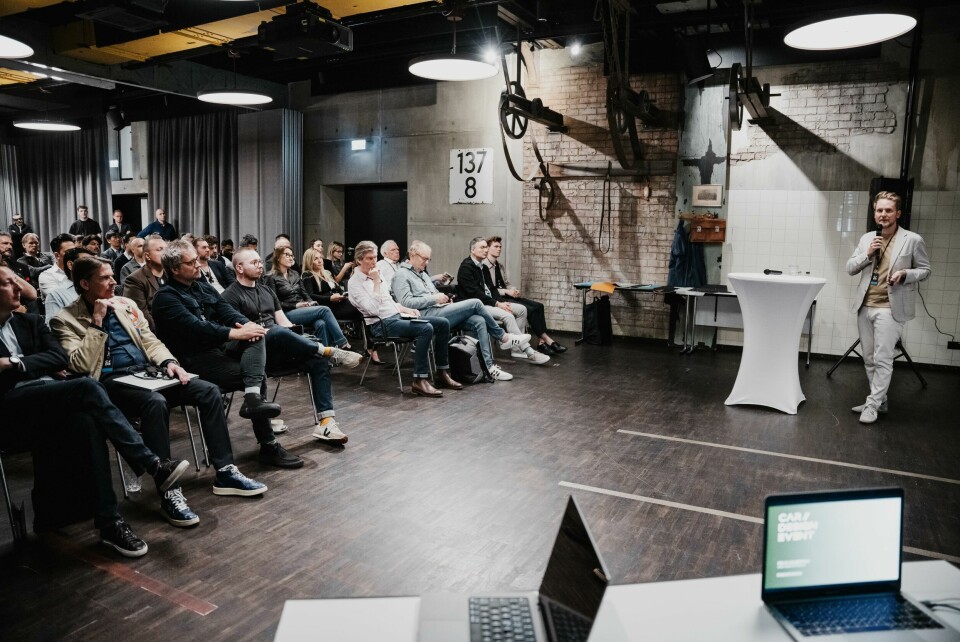
Mazda Europe’s head of design, Jo Stenuit, gave a passionate speech on the evolution of Mazda as a brand and how it made design a central tenet to the company. Part of that came down to being bold.
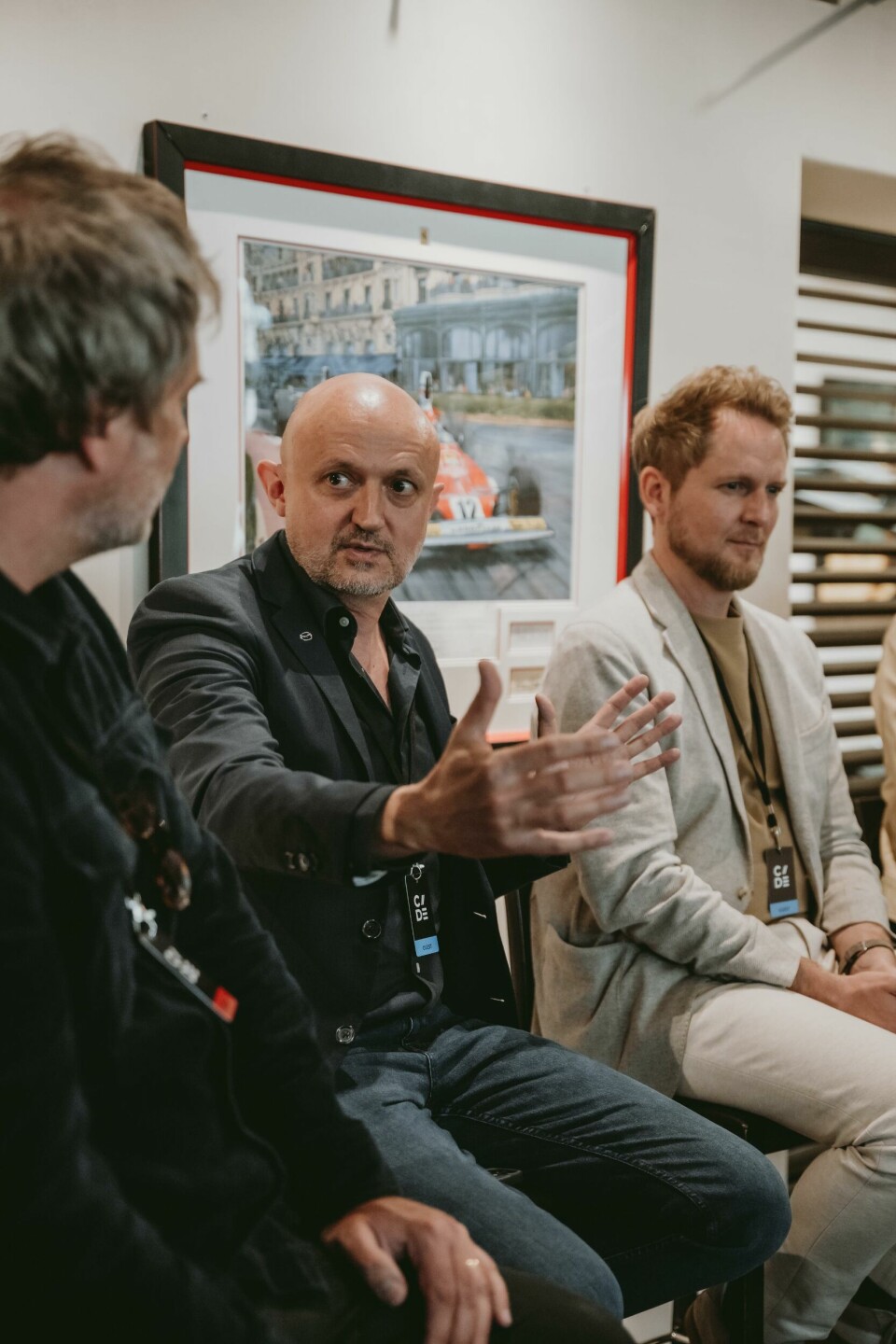
“We took red as our brand colour, even though red is so closely associated with Ferrari,” he recalled. “With Kodo design (soul of motion) we want our cars to look like they are moving even when they aren’t.” There are other Japanese principles at play, such as Hoyaku (the beauty of empty space), Adeyaka (the art of reflections, light and shadow) and Musubu (the art of stitching).
Up next was David Hilton, now in the capacity of an independent designer with his own consultancy, who in the space of a few minutes crystallised the problem that faces both new and emerging brands: designing with purpose and with a story. “It is about following that story down to the final product,” he said. “I think that’s why we see lots of cars that look the same because there is no story behind it, and designers just cherry pick bits they like and stick them on. Cars like that end up looking like Mr Potato head.”
Moritz Martin, senior exterior designer at Genesis Europe, spoke about the Speedium Giro concept – given its global debut – which integrates bicycle storage in a unique way. Rather than a traditional roof rack, the carrier is in fact built into the rear spoiler, positioning the bike much further back on the car. It adds an interesting new dynamic to the silhouette of the car, and Martin noted that the team in Frankfurt is “really happy with the design… Everything works together and the proportions are beautiful.”
Elsewhere, there are additional light bars front and rear on the roof, and some extravagant new wheel designs designed to improve brake cooling. As an EV, the distinctive Genesis grille design has evolved to become a light bar, which is bright enough to stand out against the attractive Matterhorn white paint.
The fuel-cell Hopium Machina concept car we saw back in 2022 was presented in the metal by designer Felix Godard. While quite striking in its exterior design and with an accomplished interior, it is unlikely to progress any further with reports that funding for the project has dried up. We are sure that Godard, who runs his own practice, will find work off the back of the Hopium car nonetheless.
Volkswagen designers were on hand to follow up on the ID.2all concept shown last year, this time with an updated pre-production variant, heavily-camouflaged on the exterior but with a complete interior on display. Ambient lighting floods the cabin and there is a reductive new steering wheel design that leaves the instrument cluster in plain view.
There is soft suede-like finishing throughout, clever storage space in the boot and underneath the rear bench seats. A drawback is that the car floor sits quite high up due to the battery packs underneath, leaving even modestly-sized passengers with knees up around their ears.
The Hyundai Motor Group had a particularly strong presence at the show, with not only Genesis but also Hyundai, Kia and Supernal models on display (in the case of the latter, a scale model, for obvious reasons). Genesis North America’s John Krsteski noted that he feels the eVTOL trend is not yet fully understood away from large, congested cities. “If you’ve lived in LA as long as I have, you get why it really is the future of mobility,” he remarked.
The new Santa Fe revealed last year was on show complete with camping accessories in line with the Korean trend for ‘Chabak’. Eduardo Ramirez, head of exterior design for Hyundai Europe in Frankfurt, told Car Design News that it was one of the rare projects where boot space and layout was a jumping off point: “It was designed to get you closer to nature.” From our brief interaction with the car, we can see the appeal.
More timely from a news perspective was the European reveal of the K5 SUV, which was given the full turntable treatment on its own the night previous. Car Design Review X judge Won kyu Kang took some time to run through the design with CDN and seemed genuinely proud of what had been achieved, particularly given the compressed timeline.
“Our interior and exterior team worked really well on the K5, there was no conflict and it wasn’t a case of one leading the other. That relationship really shows in the final design,” he said. “We had fun with this for sure, but it was challenging.” In the metal, the K5 is boxy, upright and would almost be imposing if it were not for the gentle sky blue paint, lack of overly-muscled arches and clean four-spoke wheel covers.
Kang was also on hand to unpack the PV1 and PV7 concepts, two of the four revealed at CES this year. These are the smallest and largest of the bunch respectively and envision a new type of scalable van platform. The PV7 acts almost like a mothership and if we were to eyeball it, is about the same size as the largest delivery vans you find on the road today.
What’s different is how the footprint is utilised, with the wheels pushed to the very corners of the car and interior space maximised. Kang noted that this was another fun project to work on but for different reasons to the K5: building a vehicle that is functional, practical and desirable in its own way. “We’ve seen lots of emotional, luxurious and dynamic cars today, but this is actually at the total opposite end of the scale.”
Adding an extra flavour to the event was the inclusion of some significant concept cars, one that is very recent and one that few will have ever even heard of, yet alone seen before.
The Mercedes Vision One-Eleven was like a Hollywood star on the main concourse, drawing equal attention from journalists, fellow designers and students alike. At the centre, however, was a 1985 Gandini concept car that was sat hidden away, uncompleted, for most of its life. The juxtaposition of old and new was fascinating. The One-Eleven had been polished to within an inch of its life, glistening not only on the outside but also the silver interior within; the Gandini concept was still dusty, sporting patches of filler, chipped paint and a part-finished interior.
Reflecting on the day itself, event founders Des Sellmeijer and Jens Meiners (a long-time CDN contributor) highlighted the significance of bringing designers and journalists closer together, but also having the freedom to get hands on with the products themselves.
“The opportunity to take some time and crawl through the cars, touch them and everything… That is more than a usual car show can offer,” noted Meiners. “For those who are interested in design, it’s a motor show without the stuff on the side that they don’t really need,” agreed Sellmeijer.
Car Design Event will return in 2025.
